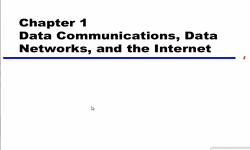In this paper, Asynchronous Self-Power Gating technique (ASPG) is used to reduce consumption power in asynchronous digital watch application. The power gating control signal is automatically generated by internal system operation characteristics inste...
http://chineseinput.net/에서 pinyin(병음)방식으로 중국어를 변환할 수 있습니다.
변환된 중국어를 복사하여 사용하시면 됩니다.
- 中文 을 입력하시려면 zhongwen을 입력하시고 space를누르시면됩니다.
- 北京 을 입력하시려면 beijing을 입력하시고 space를 누르시면 됩니다.
https://www.riss.kr/link?id=A105923612
-
저자
Kim-Ngan Thi Mai (Ho Chi Minh Univeristy of Technology and Education) ; Huan Minh Vo (HCMC University of Technology and Education)
- 발행기관
- 학술지명
- 권호사항
-
발행연도
2018
-
작성언어
English
- 주제어
-
등재정보
KCI등재
-
자료형태
학술저널
-
수록면
548-557(10쪽)
-
KCI 피인용횟수
0
- DOI식별코드
- 제공처
-
0
상세조회 -
0
다운로드
부가정보
다국어 초록 (Multilingual Abstract)
In this paper, Asynchronous Self-Power Gating technique (ASPG) is used to reduce consumption power in asynchronous digital watch application. The power gating control signal is automatically generated by internal system operation characteristics instead of using replica circuit delay or four-phase handshaking protocol. Isolation cell is designed to insert it between power gating domain and normal operation domain. By using self-power gating circuit, asynchronous digital watch application consumes very low power and maintains data during sleep mode. The comparison results show the proposed ASPG technique saves leakage power up to 40.47% and delay time is reduced to 71% compared to the conventional circuit.
목차 (Table of Contents)
- Abstract
- Ⅰ. Introduction
- Ⅱ. Asynchronous Digital Watch Design
- Ⅲ. Power Gating in Asynchronous Circuit
- Ⅳ. Simulation Results
- Abstract
- Ⅰ. Introduction
- Ⅱ. Asynchronous Digital Watch Design
- Ⅲ. Power Gating in Asynchronous Circuit
- Ⅳ. Simulation Results
- Ⅴ. Conclusion
- References
참고문헌 (Reference)
1 "Predictive Technology Model (PTM)"
2 Yvain Thonnart, "Power Reduction of Asynchronous Logic Circuits Using Activity Detection" 17 (17): 893-906, 2009
3 Chong-Fatt Law, "Modeling and Synthesis of Asynchronous Pipelines" 19 (19): 682-695, 2011
4 Akhila Abba, "Improved Power Gating Technique for Leakage Power Reduction" 4 (4): 6-10, 2014
5 Ik Joon Chang, "Exploring Asynchronous Design Techniques for Process-Tolerant and Energy-Efficient Subthreshold Operation" 45 (45): 401-410, 2010
6 Huan Minh Vo, "Dual-switch power gating revisited for small sleep energy loss and fast wake-up time in sub-45-nm nodes" 8 (8): 232-238, 2011
1 "Predictive Technology Model (PTM)"
2 Yvain Thonnart, "Power Reduction of Asynchronous Logic Circuits Using Activity Detection" 17 (17): 893-906, 2009
3 Chong-Fatt Law, "Modeling and Synthesis of Asynchronous Pipelines" 19 (19): 682-695, 2011
4 Akhila Abba, "Improved Power Gating Technique for Leakage Power Reduction" 4 (4): 6-10, 2014
5 Ik Joon Chang, "Exploring Asynchronous Design Techniques for Process-Tolerant and Energy-Efficient Subthreshold Operation" 45 (45): 401-410, 2010
6 Huan Minh Vo, "Dual-switch power gating revisited for small sleep energy loss and fast wake-up time in sub-45-nm nodes" 8 (8): 232-238, 2011
동일학술지(권/호) 다른 논문
-
A novel approach to design of local quantizers for distributed estimation
- 한국전기전자학회
- Yoon Hak Kim
- 2018
- KCI등재
-
Design of Main Body and Edge Termination of 100 V Class Super-junction Trench MOSFET
- 한국전기전자학회
- Young Hwan Lho
- 2018
- KCI등재
-
P2P Streaming Media Node Selection Strategy Based on Greedy Algorithm
- 한국전기전자학회
- Yiqi Gui
- 2018
- KCI등재
-
Preprocessing for High Quality Real-time Imaging Systems by Low-light Stretch Algorithm
- 한국전기전자학회
- Dat Ngo
- 2018
- KCI등재
분석정보
인용정보 인용지수 설명보기
학술지 이력
| 연월일 | 이력구분 | 이력상세 | 등재구분 |
|---|---|---|---|
| 2024 | 평가예정 | 재인증평가 신청대상 (재인증) | |
| 2021-01-01 | 평가 | 등재학술지 선정 (계속평가) |  |
| 2020-12-01 | 평가 | 등재후보로 하락 (재인증) |  |
| 2017-01-01 | 평가 | 등재학술지 선정 (계속평가) |  |
| 2016-01-01 | 평가 | 등재후보학술지 유지 (계속평가) |  |
| 2015-12-01 | 평가 | 등재후보로 하락 (기타) |  |
| 2011-01-01 | 평가 | 등재 1차 FAIL (등재유지) |  |
| 2009-01-01 | 평가 | 등재학술지 유지 (등재유지) |  |
| 2006-01-01 | 평가 | 등재학술지 선정 (등재후보2차) |  |
| 2005-10-17 | 학술지명변경 | 외국어명 : 미등록 -> Journal of IKEEE |  |
| 2005-05-30 | 학술지등록 | 한글명 : 전기전자학회논문지외국어명 : 미등록 |  |
| 2005-03-25 | 학회명변경 | 한글명 : (사) 한국전기전자학회 -> 한국전기전자학회영문명 : 미등록 -> Institute of Korean Electrical and Electronics Engineers |  |
| 2005-01-01 | 평가 | 등재후보 1차 PASS (등재후보1차) |  |
| 2004-01-01 | 평가 | 등재후보 1차 FAIL (등재후보1차) |  |
| 2003-01-01 | 평가 | 등재후보학술지 선정 (신규평가) |  |
학술지 인용정보
| 기준연도 | WOS-KCI 통합IF(2년) | KCIF(2년) | KCIF(3년) |
|---|---|---|---|
| 2016 | 0.3 | 0.3 | 0.29 |
| KCIF(4년) | KCIF(5년) | 중심성지수(3년) | 즉시성지수 |
| 0.24 | 0.22 | 0.262 | 0.17 |




 KCI
KCI DBpia
DBpia


